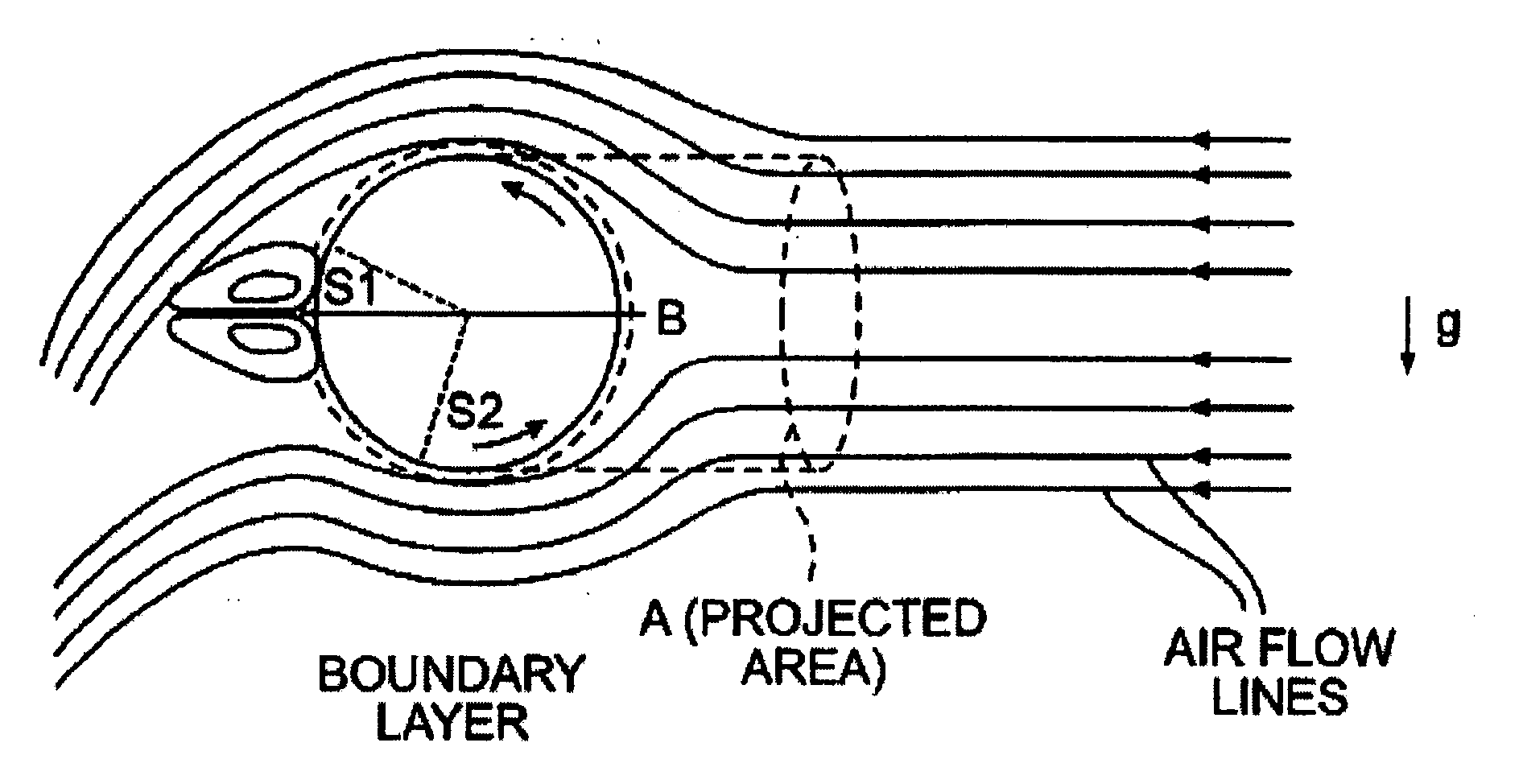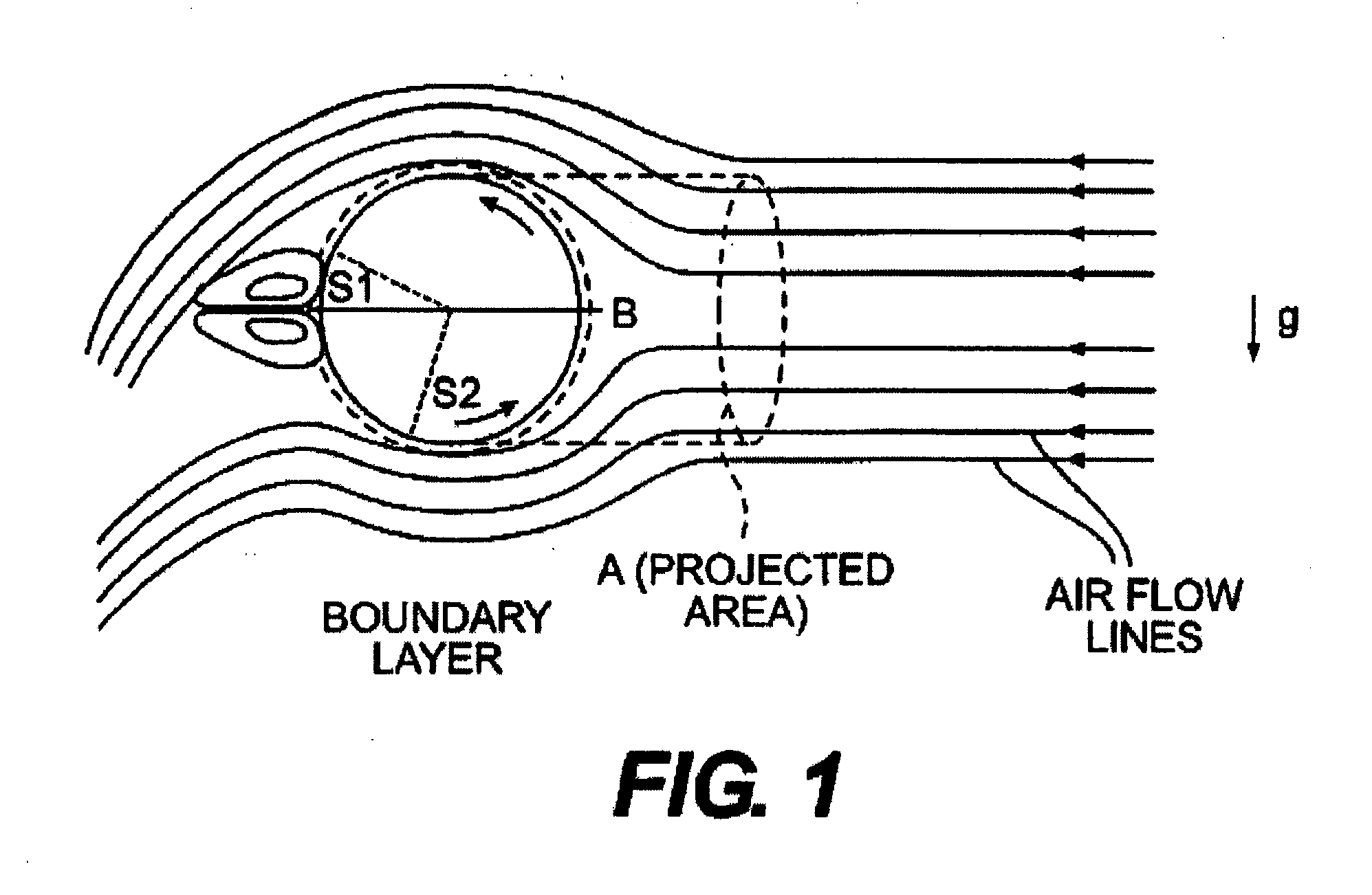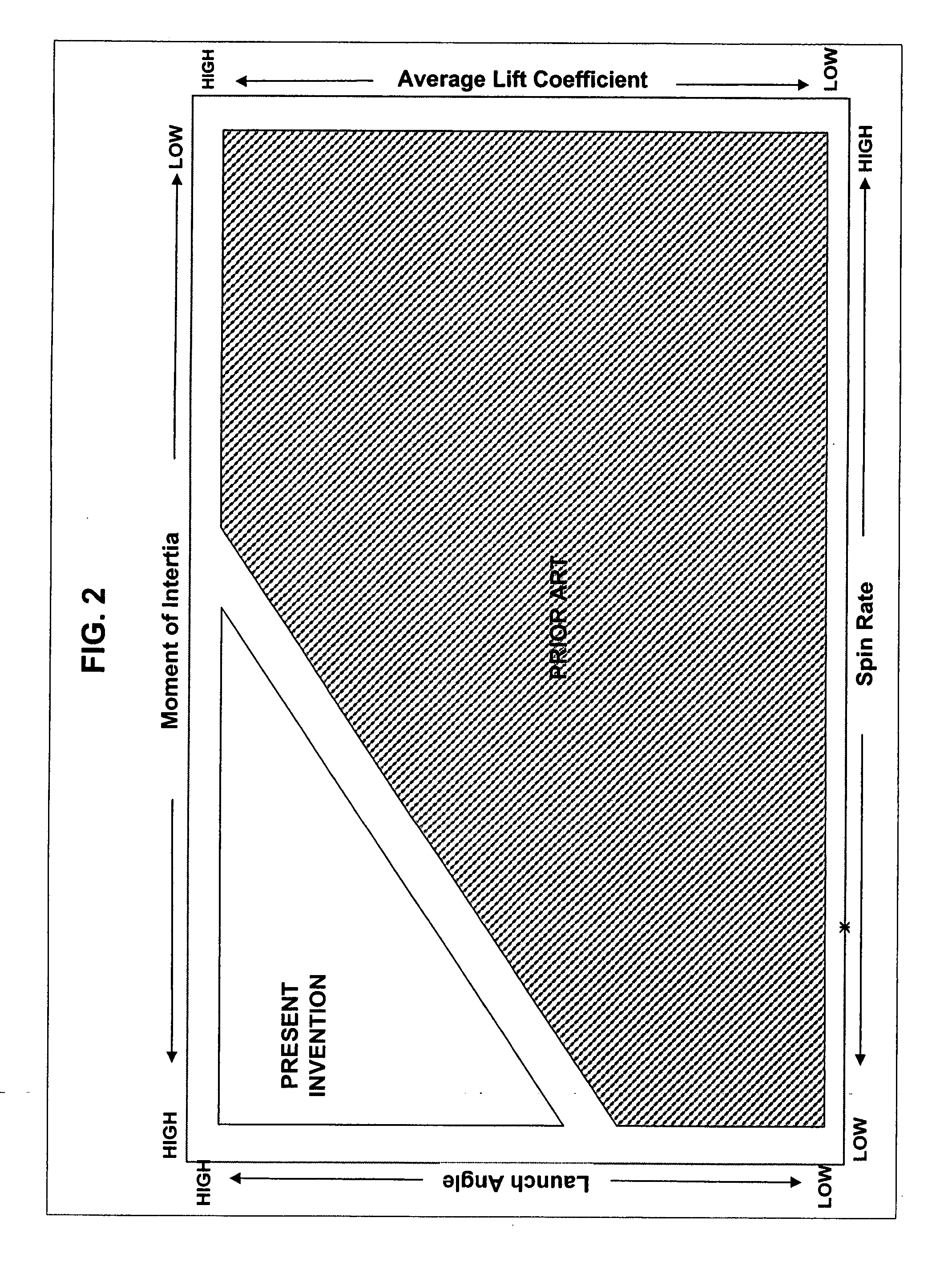Golf ball having specific spin, moment of inertia, lift, and drag relationship
a golf ball and moment of inertia technology, applied in the field of golf balls, can solve the problems of golf balls off their intended course, golf balls with high spin rate, and recreational players who cannot intentionally control the spin of balls
- Summary
- Abstract
- Description
- Claims
- Application Information
AI Technical Summary
Benefits of technology
Problems solved by technology
Method used
Image
Examples
first embodiment
[0031] the present invention is directed to a golf ball with low spin rates, high lift coefficients, and low drag coefficients, as illustrated in FIG. 2. A high coefficient of lift according to this embodiment corresponds to a variety of swing speeds and a variety of Reynolds Numbers and spin rates. As used herein, “low spin rates” refers to initial driver spin rates of about 3100 rpm or less at a launch angle of greater than about 10 degrees. The spin rate of the golf ball may be measured using a variety of methods, of which one of ordinary skill in the art is aware. For example, spin rate may be measured by observing the rotation of the ball in flight using stop action Strobe photography. The spin rate is a function of club-head speed, launch angle, and initial velocity and may thus be controlled by adjusting these parameters. The moment of inertia of a golf ball may also help to control the spin rate of a golf ball. For example, as discussed in more detail below, a high moment of...
second embodiment
[0035] the present invention is directed to lower the trajectory of a golf ball with a high spin rate in contrast to the above-referenced prior art golf balls. This may be accomplished by designing a golf ball with a high spin rate, a low lift coefficient, and a low drag coefficient, as illustrated in FIG. 3. A low coefficient of lift according to this embodiment corresponds to a variety of swing speeds and a variety of Reynolds Numbers and spin rates. For example, the lift coefficient (CL) is less than about 0.20 and the drag coefficient (CD) is less than about 0.22 at a low to medium swing speed, e.g., Reynolds Numbers (NRe) of about 145000 and a high spin rate (ω) of about 3700 rpm at a ball speed of 120 m / h.
[0036] Preferably, a golf ball according to this embodiment also possesses a low moment of inertia, which may aid in facilitating the design of a golf ball having these aerodynamic properties. For example, in one embodiment, a high spin rate golf ball preferably has a moment ...
PUM
 Login to View More
Login to View More Abstract
Description
Claims
Application Information
 Login to View More
Login to View More - R&D
- Intellectual Property
- Life Sciences
- Materials
- Tech Scout
- Unparalleled Data Quality
- Higher Quality Content
- 60% Fewer Hallucinations
Browse by: Latest US Patents, China's latest patents, Technical Efficacy Thesaurus, Application Domain, Technology Topic, Popular Technical Reports.
© 2025 PatSnap. All rights reserved.Legal|Privacy policy|Modern Slavery Act Transparency Statement|Sitemap|About US| Contact US: help@patsnap.com



